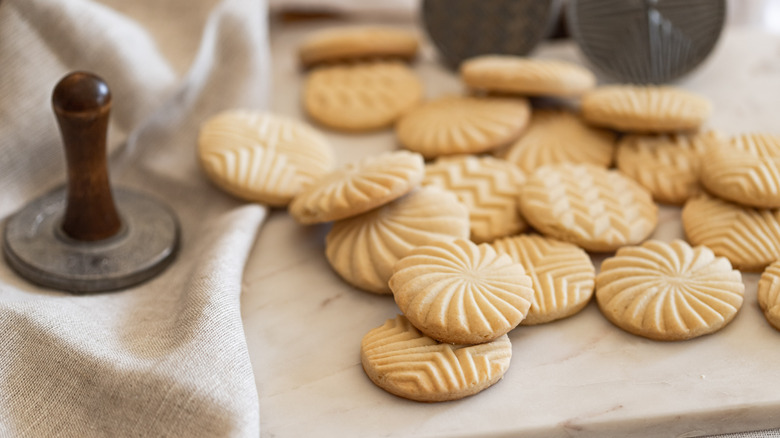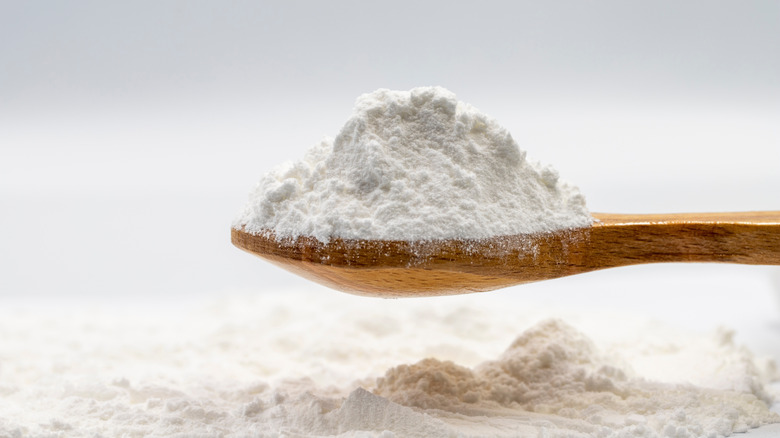The Sugar Tip That Makes Butter Cookies Irresistibly Good
In regular baking use, granulated white sugar is generally king because it's cheap, easy to use, super shelf-stable, and just, well, more common. Powdered sugar (which is a lot like confectioners' sugar) is often thought of as merely a sweet topper for cookies and pastries. But it can come in handy for the perfect texture in cookies, too — or for making super fluffy whipped cream, and even as a sweet addition for more flavorful fried chicken.
Powdered sugar dissolves more easily than granulated when mixed with butter, which makes the resulting cookies airier and easily broken into fine crumbs. The result is a texture that melts in the mouth and nearly dissolves when dipped into a glass of milk. Plus, using powdered sugar in butter cookies makes the dough (almost an icing, really) smooth, pliable, and super easy to pipe onto your cookie sheet and pop into the oven. It will incorporate entirely in the dough without leaving any crunchy grains behind.
Just like using powdered sugar versus granulated sugar in sugar cookies, using powdered sugar in your butter cookies will result in sweet treats that are more cake-like, but still with a decent snap. They will have an incredible shortbread quality and tenderness that you just can't get from granulated white sugar.
How to use powdered sugar in place of granulated sugar
Powdered sugar is, basically, granulated white sugar that has been pulverized, so it becomes soft and fluffy, rather than solid and grainy. This is why powdered sugar dissolves so easily when mixed or baked, but it means that it takes up more volume by weight in its dry form. So, if you're measuring by volume, a safe rule of thumb is to use 1 ¾ cups of powdered sugar in place of a single cup of granulated sugar in your recipe. But for a recipe with ingredients by weight, you can simply use the same weight of powdered sugar that you would use for granulated sugar.
Store-bought powdered sugar sometimes contains cornstarch (making it confectioners' sugar, technically, though it may still be called powdered sugar) which works as an anti-caking agent. This allows the incredibly finely-pulverized sugar to stay nice and dry on the shelf, without clumping or becoming a single solid mass. But, when used in baking, the cornstarch will actually make your baked goods (like butter cookies) "cakier" in texture. No caking or clumping on the shelf, more melt-in-your-mouth texture when it comes out of the oven.
You can easily make your own powdered sugar at home simply by grinding granulated sugar in a blender — or mix one cup of granulated sugar and one tablespoon of cornstarch before blending for a confectioners' sugar feel. Give it a few pulses until it's fine like powdery snow, and the finished product will blend beautifully into softened butter for your next batch of butter cookies.

